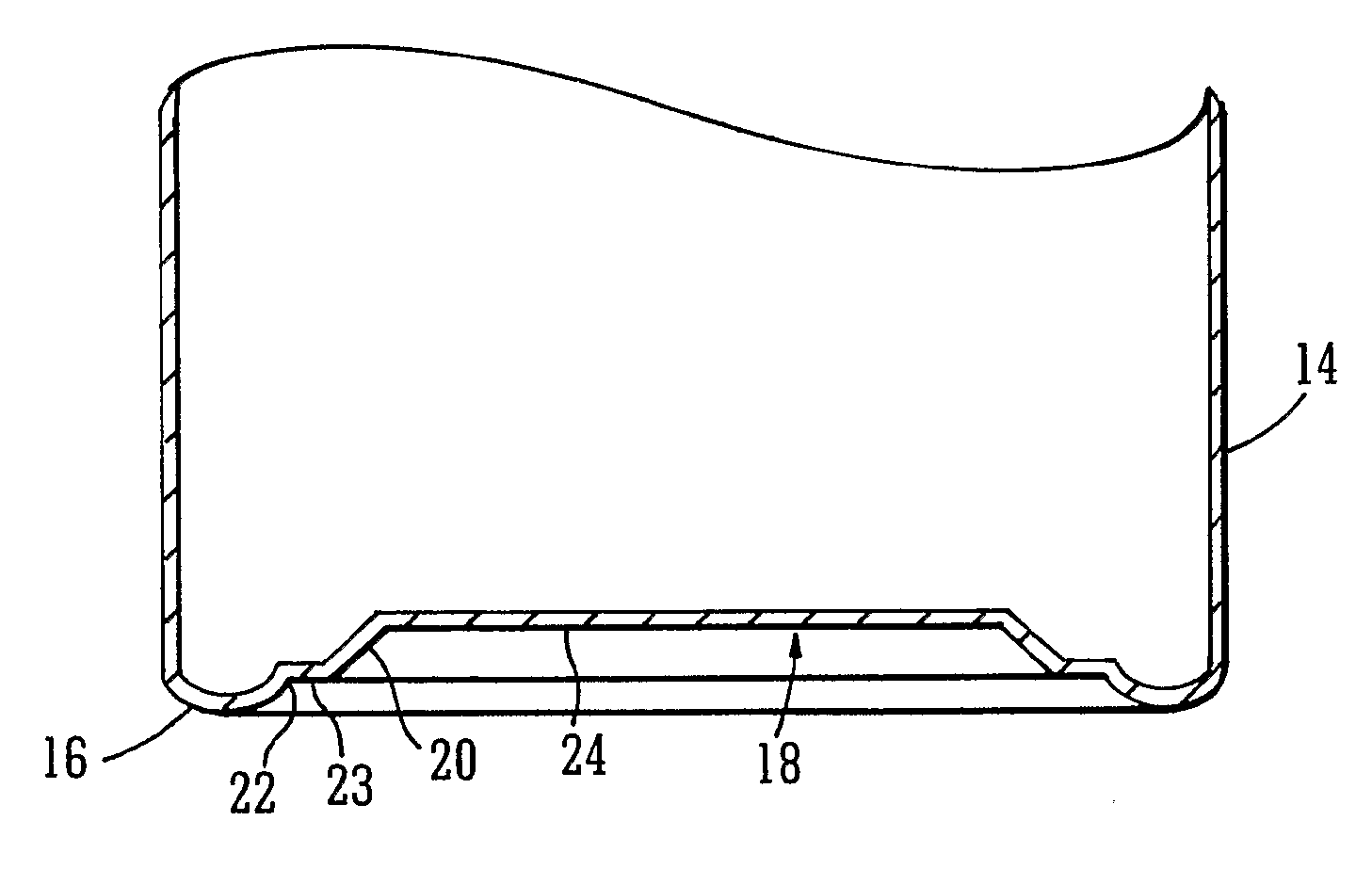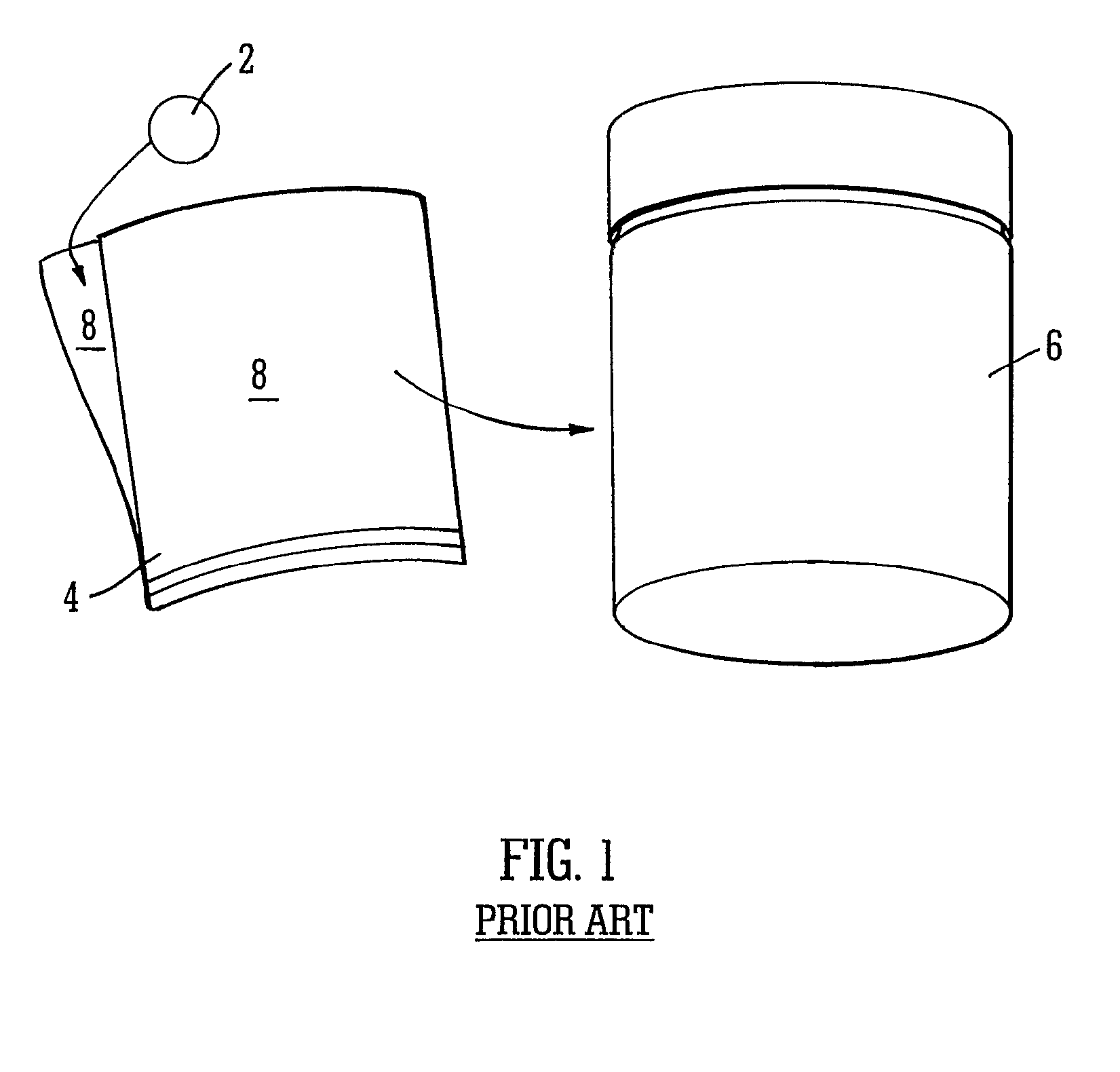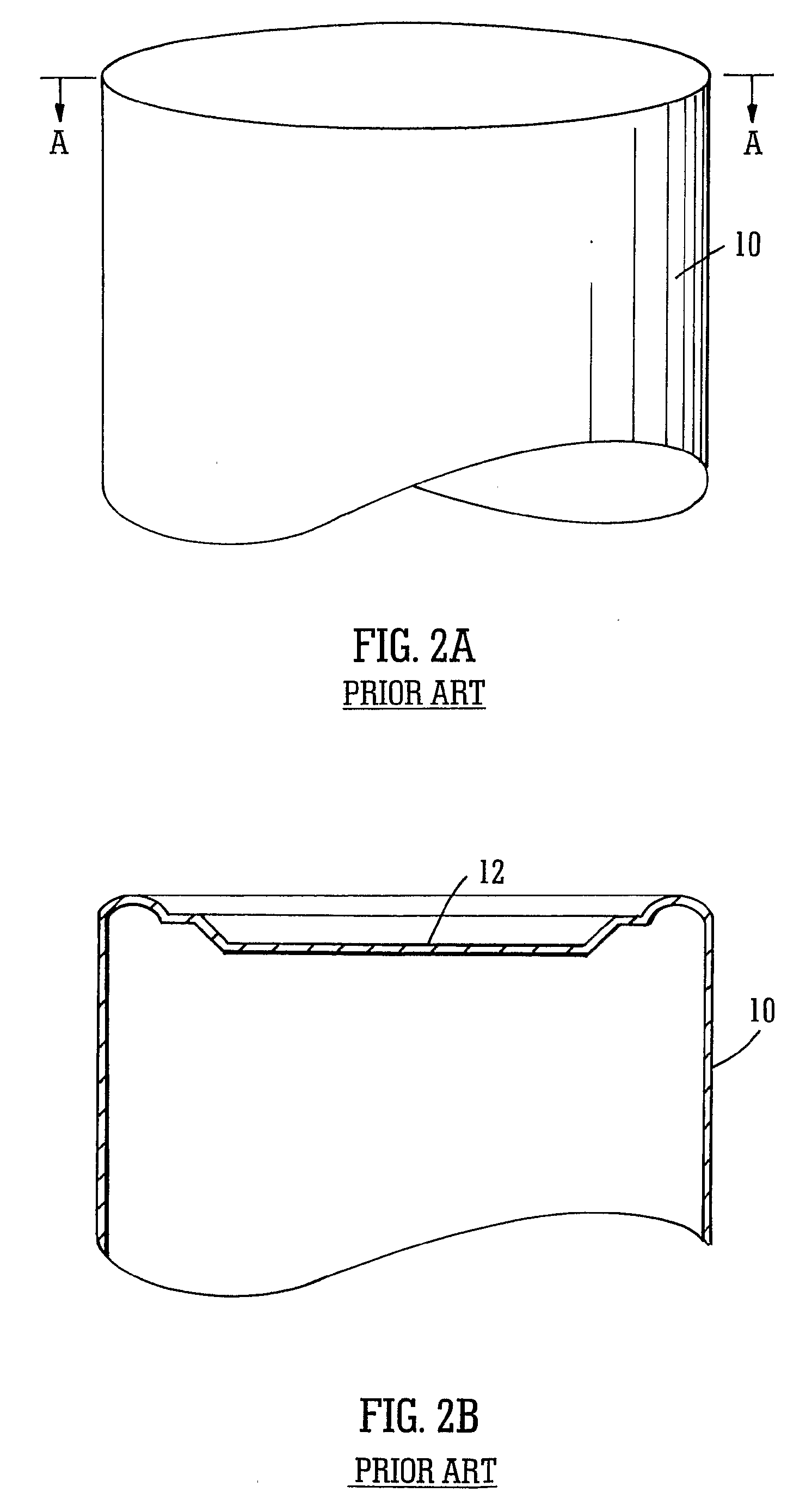Method of Attaching an Rfid Tag to a Component, a Component Comprising an Rfid Tag and Rfid Tag
- Summary
- Abstract
- Description
- Claims
- Application Information
AI Technical Summary
Benefits of technology
Problems solved by technology
Method used
Image
Examples
Embodiment Construction
[0059]There is a real desire and need in industry for packaging to be manufactured with an integral RFID functionality, namely, an RFID enabled packaging component in which RFID tags are not applied like a label or attached by adhesive but are integrated into the packaging component itself to provide a practical and robust product.
[0060]Whilst there exist many different industries and many suitable products that would benefit from the application of RFID, the present invention will be described by way of examples in the context of containers for use in the packaging of pharmaceuticals. However, it will be appreciated that the methodology embodying the invention is not to be considered as being limited to the packaging of pharmaceuticals but may be applied to any container or product, preferably formed of a plastics material, that requires RFID enablement.
[0061]FIG. 1 shows a conventional RFID tag 2 to be incorporated in a conventional adhesive label 4 which may be attached to a typi...
PUM
 Login to View More
Login to View More Abstract
Description
Claims
Application Information
 Login to View More
Login to View More - R&D
- Intellectual Property
- Life Sciences
- Materials
- Tech Scout
- Unparalleled Data Quality
- Higher Quality Content
- 60% Fewer Hallucinations
Browse by: Latest US Patents, China's latest patents, Technical Efficacy Thesaurus, Application Domain, Technology Topic, Popular Technical Reports.
© 2025 PatSnap. All rights reserved.Legal|Privacy policy|Modern Slavery Act Transparency Statement|Sitemap|About US| Contact US: help@patsnap.com



